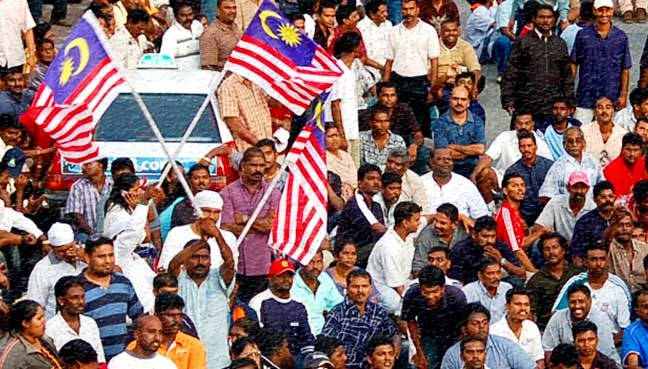
Murray Hunter
Beyond population statistics: Political will and the future of Indian community in Malaysia
P Ramasamy
Jul 28, 2025

Those who cite the gloomy picture of Indian population statistics relative to the Malays and Chinese population might be telling the truth.
It is expected that by 2059, Indian population figure will be around 4.7 percent of the total population with Malays increasing their population shares.
The relative decrease of Indian vis-a-vis the majority population is seen as something detrimental to the plight of the Indian community.
This population decline unless matched by the improvements in the lives of Malaysians Indians portends a bleak future of the community given its dependent status on the government.
If the government failed to address the socioeconomic plight of the community in the past and present, with relative population decrease, the government might completely ignore the situation of the community.
The Chinese population is expected to decline in comparison with the Malays, but it argued that with economic and social strength they will be able to weather the detrimental effects of the population decline.
The relative population argument makes sense and the future of the Indian community might be compromised.
However, the population decrease thesis fails to factor the element of political will both on the side of the government in power and how effective representational force on behalf of the Indian community can change the present racial equation in favour of the community.
Those who see a bleak figure of the Indian community in population terms fail to realise that Indians even with a limited population can arise to the occasion to demand for their rights and rightful place in the country.
Indians in 2007 were also in similar minority status but it did not prevent the Hindraf movement from taking to the streets in Kuala Lumpur to demand for the community rights such as respect and dignity for their places of worship.
It was the same Hindraf movement that catapulted the fall of five states in the 2008 elections. In the absence of Indian support, I seriously doubt that the DAP and PKR could have captured some states and what is more taken the federal government in 2008.
Again without Indian support together with the Chinese and Malays propelled the PH coalition in combination with other political coalitions to capture national power.
Just a narrow myopic look at the population scenario might not do justice to the Indian community to effect change in combination with other communities.
Indians should not be seen as an isolated and marooned ethnic community.
Yes, I certainly agree that the future population statistics might not paint a positive picture of the Indian community in the future.
Unfortunately, those analysts relying on mere population statistics seem not to think out of the box what the Indian community can do, how they can relate to others in forming political pacts, what right minded Indian leaders can do in terms of being imbued with a political will to something for the progress of the community in the future.
Narrow examination of population statistics will help invariably point to the dismal future of the Indian community.
However, a consideration of the human agency in the transformation of the Indian community might present a different and more positive stride of the community.
I certainly agree that relative population decline might pose representational problems for the Indian community. Population decline need to reduce the bargaining strength of the community if we factor the need for political will, strong representation for the community, alliances with other communities in effecting political changes that might be beneficial to the community in the long run.
The question is not so much about the deleterious effects of population decline but how such a decrease can be negated the power of human political will.
No comments:
Post a Comment